The best stealth games on PC
Don’t let these sneaky games pass you by.


We’ve been playing stealth games for decades now, infiltrating military bases undetected, choking henchmen from behind and packing ventilation shafts with their naked unconscious bodies. But making sneaking fun isn’t easy. Full spatial awareness, how to communicate your visibility, and reliability of tools and AI behaviors are a hard thing to pin down. Luckily, these games pull it off without disturbing a single dust mote. They’re the best stealth games you can play on the PC right now, and what we recommend for players looking to get their super quiet feet wet.
Deus Ex
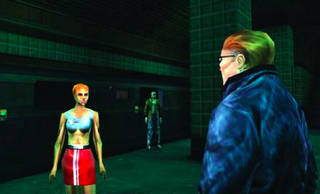
Release date: 2000 | Developer: Ion Storm | Steam
Deus Ex' sandbox structure made it a landmark study in open-ended design. The large environments and varied upgrade tree are designed to give you ways to solve tasks expressively, using imagination and forethought instead of a big gun. Nearly every stealth game on this list borrows something from Deus Ex, and it’s easy to see why.
Deus Ex pulled off experimental, player-driven stealth design in huge, tiered environments. It was the cyberpunk espionage dream, and for many modern developers, it still is. The last two entries in the series, Human Revolution and Mankind Divided, play with similar, more streamlined design, and while we recommend them as well, they still can’t brush with the complexity and novelty of the original. If you’re not big on playing old games, install some mods like Deus Ex Revision, and give it a shot.
Read more: How to have the best Deus Ex-perience in 2022
Hitman

Release date: 2016 | Developer: IO Interactive | Steam

2023 games: Upcoming releases
Best PC games: All-time favorites
Free PC games: Freebie fest
Best FPSes: Finest gunplay
Best MMOs: Massive worlds
Best RPGs: Grand adventures
After Hitman: Absolution, it seemed that Blood Money would stay the golden standard for silly stealth sandbox shenanigans indefinitely, but IO Interactive surprised us all with Hitman’s new episodic format. For the better part of 2016, we were treated with a new level every month, each featuring a different setting, layout, and pocket universe of NPCs going about their clockwork lives. Agent 47 is the screwdriver you get to jam in wherever you choose. Watching the mechanism break around you (and reacting to it when things go wrong) is central to Hitman’s charm.
I like the way Phil put it in his season review: “Strip away the theme and fantasy, and you're left with a diorama of moving parts—a seemingly perfect system of loops, each intersecting to create a complex scene. It's left to you to decide how you want to break it—whether it's by surgically removing key actors, or by violently smashing it all up with guns, bombs and a stuffed moose.”
Supported with a steady stream of updates, including temporary Elusive Targets and remixed levels, it’s still possible to play the entirety of season one in new ways (and season two is already in development). We might be getting a steady stream of Hitman forever, and videogames are better for it.
Read more: The joy of bashing people over the head with everyday objects in Hitman
The biggest gaming news, reviews and hardware deals
Keep up to date with the most important stories and the best deals, as picked by the PC Gamer team.
Splinter Cell: Chaos Theory
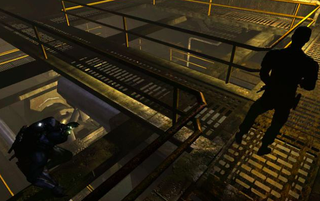
Release date: 2005 | Developer: Ubisoft | Steam
In the years since Chaos Theory, Splinter Cell and the majority of stealth games have veered from a focus on purely covert scenarios, and it’s easy to see why. Chaos Theory is a complex, punishing stealth game whose gratification is severely delayed (for the better). Getting through an area without a soul knowing takes pounds of patience and observation, and getting caught is not easy to recover from. It was a slow, arduous crawl, but a crawl unlike any other in the genre, with a level of realism we haven’t seen since.
Accompanied by a Sam Fisher at peak Jerk Cowboy, as difficult as it was, we laughed through the pain. The multiplayer was also a bold experiment in asymmetry at the time, pitting Sam-Fishery spies against first-person shooting soldiers in a tense game of hide and seek.
Read more: The making of Splinter Cell: Chaos Theory
Thief 2
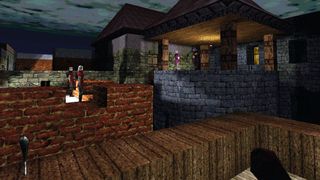
Release date: 2000 | Developer: Looking Glass Studios | Steam
Alongside Deus Ex, the Thief series introduced new variables to stealth games that have since been adopted as a standard nearly across the board. Using light and shadow as central to your visibility, Thief made stealth much more than the visible-or-not dichotomy of implied vision cones.
The Thief series is still unparalleled in the subtlety of its narrative and environmental design. Jody Macgregor sums it up in a piece on the very subject: “Thief II ramps up the number of secrets within each level, but even with as many as a dozen hidden rooms and stashes to discover their placement is always just as subtle. A shooting range conceals a lever among the arrows embedded in the wall behind the targets, a bookshelf is slightly out of alignment, a glint of light pokes through the edge of a stone in a wall. Compare that to Deus Ex: Human Revolution, which sometimes hides one of the many ducts you can climb into behind a crate but more often plonks them into the corner of rooms beside a neon sculpture.”
The first two Thief games are interchangeable as the ‘best’ for most players, so be sure to play them both, but the second takes the cake as a best-of recommendation for working out some UI and AI kinks from the original. But with both games, install a few mods and it’s fairly simple to make them easier on the eyes and our modern design sensibilities.
Read more: Thief's brilliant subtlety is still unmatched
Mark of the Ninja

Release date: 2012 | Developer: Klei Entertainment | Steam
The biggest challenge facing stealth games has always been how to communicate whether or not you’re visible to enemies. While we’re still working out the kinks in 3D games, Mark of the Ninja solved just about every problem with two dimensions.
Through clear UI cues, it’s easy to tell how much noise you’re making, whether or not a guard can hear it, and what spaces in the environment are completely safe to hide. There’s almost no room for error, at least in how you interpret the environment and your stealthy (or not) status within it. Accompanied by swift, springy platforming control and a robust ninja ability upgrade tree, by the end of Mark of the Ninja the challenge reaches high, but so too does your skill.
Dishonored 2
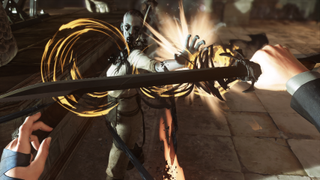
Released: 2016 | Developer: Arkane Studios | Steam
What surprised me most about Dishonored 2 is the density of its level design. Like other stealthy immersive sims, it features huge levels with any number of potential routes for getting through, but Dishonored 2 is the first to make me want to see every inconsequential alleyway. Nearly every space is as detailed as a room in Gone Home, decorated with natural props and people that tell a specific story.
There are more systems and choices than ever, and while you explore, how you dispose of or sneak by guards is a playful exercise in self-expression and experimentation. Emily and Corvo have their own unique abilities, and a single playthrough won’t get you all their powers. Summon eldritch tentacle arms to fling psychically chained enemies into the sea, or freeze time and possess a corpse during for a particularly, uh, daring escape. Just make sure not to miss Sokolov’s adventure journals, they’re a treat.
Metal Gear Solid 5: The Phantom Pain

Release date: 2015 | Developer: Kojima Productions | Steam
I think The Phantom Pain’s appeal is best summarized by how everything going wrong typically means everything is actually going well. Samuel’s anecdote from his review is a perfect example: “I forfeited a perfect kill-free stealth run of one mission because I couldn’t get a good enough sniper angle on my target before he took off in a chopper. Sprinting up flights of stairs to the helipad, my victim spotted me just in time for me to throw every grenade in my inventory under the chopper, destroying it, vanquishing him and knocking me over, before I made a ludicrously frantic escape on horseback. It was amazing, and I’m not sure it would’ve been vastly improved had I silently shot the guy and snuck out.” Wish I could’ve seen it, Sam.
For a series to go from weighed down by cutscenes, spouting nonsense about nuclear war and secret Cold War contracts with a few simple stealth sequences to a full blown open world stealth sandbox masterpiece (and on the PC too) was quite the surprise. As a silent Big Boss, there are hundreds of hours of wide open stealth scenarios to tackle in MGS5, despite its thinner second chapter. Systemically, this is one of the most surprising stealth games ever made, and as bittersweet a swan song as Kojima could leave us with before departing Konami for good.
Read more: Spending two weeks behind enemy lines in Metal Gear Solid 5
Amnesia: The Dark Descent
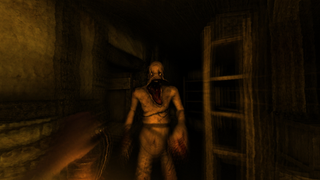
Release date: 2010 | Developer: Frictional Games | Steam
It took me six months to finish Amnesia. It doesn’t allow you to play stealth games the way you’re used to, and by removing old habits, so goes your sense of security. The sanity mechanic intentionally denies you your habits by distorting your view and slowing down your character while looking at a patrolling enemy monster. Lovely, beautiful, safe, warm light also plays a part. The darker an environment, the sooner you’ll lose sanity, but if you whip out a lantern, guess who’s going to spot it? That gross bag of skin patrolling the halls. The enemy AI isn’t particularly smart or surprising, but in an atmosphere as rich as Amnesia’s you’ll think they were put on this earth to hunt you down, specifically. If you can stomach the scares, it’s a must.
Alien: Isolation

Release date: 2014 | Developer: Creative Assembly | Steam
More than an incredible homage to ‘70s futuretech and the world of Ridley Scott’s masterpiece in horror, Alien: Isolation’s chief antagonist is a major step forward in first-person stealth horror design. The alien is a constant, erratic threat. It actively hunts you, listening for every small noise and clue of your presence, hiding in wait above for a sneak attack or—what’s that sprouting from your chest? Nice try. But besides the accomplished alien AI, Isolation makes good on its 25-hour playtime by constantly switching things up.
As Andy Kelly wrote in his review, “In one level you might lose the use of your motion tracker. In another, the alien won't be around so you can merrily shotgun androids like it's Doom 3. Then your weapons will be taken away, forcing you to make smart use of your gadgets. It does this all the way through, forcing you to adapt and readapt to different circumstances, using all the tools at your disposal.” Alien: Isolation is both a striking, authentic homage to the films, and a consistently creative stealth gauntlet. If you don’t mind getting spooked, don’t miss it.
Read more: The making of horror masterpiece Alien: Isolation
Invisible, Inc
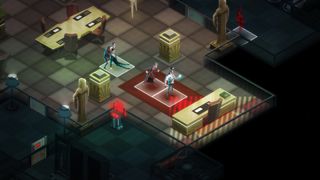
Release date: 2015 | Developer: Klei Entertainment | Steam
Invisible, Inc nails the slow tension and tactical consideration of XCOM, but places an emphasis on subversion of enemies and security placements rather than direct confrontation. You’re not an overwhelming offensive force, and getting spotted almost always spells your doom.
Chris puts it well in our Best Design award from 2015: “To the stealth sim, it introduces completely transparent rules. You always know what your options are, what the likely results of your actions will be, and your choices are always mitigated by resources that you have complete control over. There’s no chance failure, and very little trial and error. You either learn to make all of these totally-fair systems dance, or you fail.”
The turned based format means you get unlimited time to make a decision that would take a split second in a real time stealth game, but because of the extra space for consideration, Invisible Inc. piles on the systems, making every infiltration a true challenge, but one comprised of fair, transparent rule sets. Dishonored may test your sneaking reflexes, but do you have the deep smarts to be a spy? Invisible, Inc will let you know one way or the other.
James is stuck in an endless loop, playing the Dark Souls games on repeat until Elden Ring and Silksong set him free. He's a truffle pig for indie horror and weird FPS games too, seeking out games that actively hurt to play. Otherwise he's wandering Austin, identifying mushrooms and doodling grackles.
Most Popular

